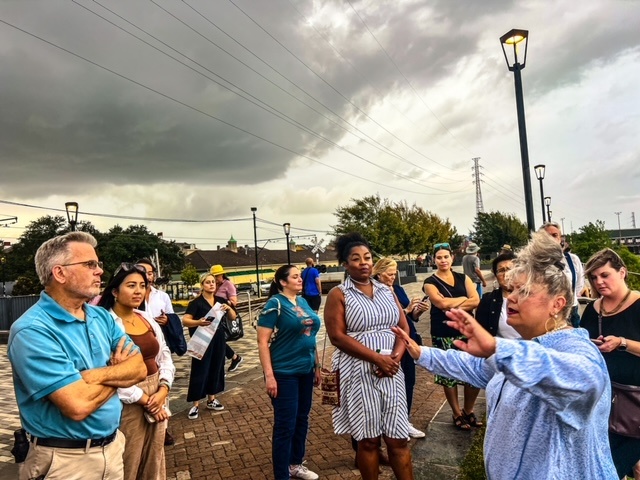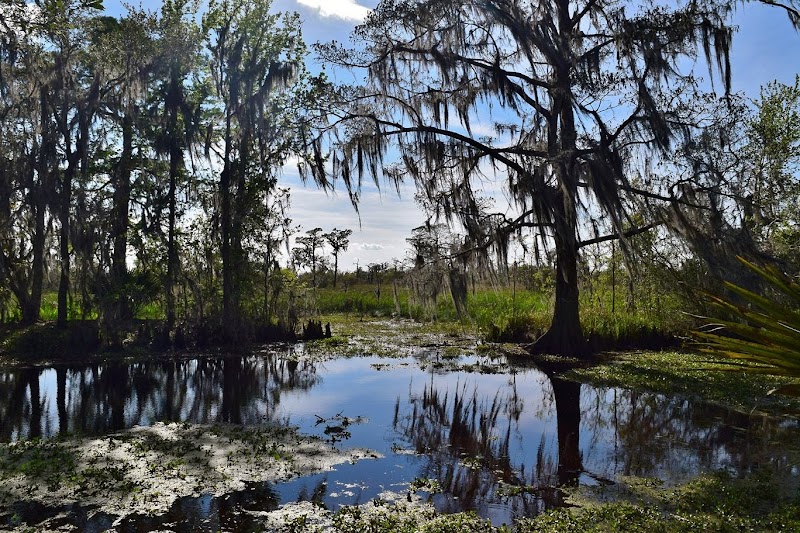Capturing New Orleans’ Flood History Through the Lens in the French Quarter
Explore New Orleans’ French Quarter through an adventurous and practical lens, uncovering the visible marks left by historic floods. This guide offers key tips for photographers and visitors eager to document the city’s resilient spirit and unique urban landscape.
Wear stable, comfortable footwear
The French Quarter is full of uneven cobblestones and narrow alleys—shoes with good grip and support help prevent slips and ankle twists.
Plan photography during early morning or late afternoon
Soft lighting enhances textures on walls and flood markings without the harsh midday sun washing out details.
Stay hydrated and prepared for humidity
New Orleans’ warm and humid climate can drain energy quickly; carry water and take regular breaks in shaded areas.
Carry a lightweight rain jacket
Weather near the Mississippi River changes fast—having rain protection ensures your gear and yourself stay dry if a sudden shower hits.
Capturing New Orleans’ Flood History Through the Lens in the French Quarter

Waters of Katrina History Green Tour
Katrina changed us forever
Discover how water has shaped New Orleans' past and present with DuPont & Company Tour Experiences. This two-hour journey reveals untold stories of resilience and flood history. Keep reading to learn why this tour offers a fresh perspective on the Big Easy’s watery legacy.
New Orleans’ French Quarter is a living chronicle of resilience, where the shadows of past floods linger on brick walls and beneath wrought-iron balconies. Photographing this history is an adventure that blends urban exploration with a search for stories etched in waterlines and weathered structures. This district, with its cobbled streets and shaded courtyards, invites you to trace the scars of storms past, where the Mississippi’s tempestuous moods have left visible marks.
Start your walk at the levee along the Mississippi River, where height markers boldly record flood levels from decades ago. Each plaque challenges you to confront how high the water once rose, daring you to imagine a current that was indifferent to the architecture it engulfed. The terrain here is flat but uneven—brace yourself for some cobblestones that can shift underfoot. Comfortable, firm-soled shoes are a must as you meander through the Quarter’s labyrinth. Bring plenty of water to stay refreshed; the humid air can weigh heavily by midday.
The adventure is about observation as much as mobility. Look up at the faded paint and chips on building walls—those peeling surfaces bear silent witness to the relentless cycle of inundation and drought. Doorways are often framed with flood lines: a faded blue streak or a chalk inscription that marks a particular storm’s fury. These are your photographic gold mines. Shooting in early morning or late afternoon highlights textures and shadows without the harsh glare that midday sun can bring.
Venture beyond the popular Jackson Square to lesser-trafficked alleys where flood marks become more subtle but equally telling. Here, old iron gates and wooden shutters whisper of floods that moved like quiet beasts, creeping inside before retreating. The French Quarter’s nature isn’t limited to architecture; cypress and oak trees along the riverfront seem to hold secrets of water’s passage, their knees and roots uniquely shaped by the tides.
Timing your visit is crucial. Early fall, after the tourist rush but before the peak humidity, offers a window when the Quarter’s atmosphere is both vibrant and manageable. Photographing flood history isn’t just about capturing the past — it’s about understanding New Orleans as a city that respects the power of water, not as a foe to conquer, but a force that shapes identity and culture.
To prepare, pack a camera with a versatile lens, a sturdy tripod for low light shots in dim alleyways, and a lightweight rain jacket—the weather can shift quickly along the river’s edge. Keep your itinerary flexible; New Orleans’ spirit is fiercely alive and sometimes demands a slower pace. Each frame you capture here is a dialogue with a city in constant flux, perched precariously yet proudly on the edge of water’s reach.
Nearby Trips
All Adventures
Boat Charters
Water Activities
Adventures near New Orleans
Discover the unique and memorable adventures that make New Orleans special.
Frequently Asked Questions
Where are the most visible flood markers in the French Quarter?
The levee along the Mississippi River near Orleans Avenue and the lower streets like Chartres and Royal Street display many plaque markers and painted flood lines that document historic water heights.
Can I access all areas of the French Quarter with a camera?
Most public streets and courtyards are accessible, but some private areas are off-limits. Early mornings and weekdays tend to be less crowded, offering better access for photography.
What local wildlife might I encounter during my walk?
While mostly urban, you might notice urban-adapted birds like herons along the riverfront, squirrels in courtyards, and occasional raccoons after dusk near darker alleys.
Is there any cultural significance to flood markings here?
Absolutely. The flood marks preserve memories of major events like Hurricane Katrina, serving as poignant reminders of the city’s ongoing relationship with water and resilience.
Are there any environmental considerations I should be aware of?
Respect local preservation rules: don't touch or disturb flood markers, avoid littering, and be mindful of fragile historic architecture that may be weakened by exposure.
What’s the best time of day for photography in the French Quarter?
Early morning or late afternoon provides soft, directional light that enhances textures on buildings and highlights flood lines without harsh shadows or glare.
Recommended Gear
Comfortable walking shoes
Supportive for uneven cobblestone streets and long walks through the Quarter.
Camera with versatile lens
Allows capturing detailed architectural elements and wide street views alike.
Lightweight rain jacket
Protects against sudden showers common near the Mississippi River.
Small tripod
Helps stabilize shots during low light hours in shady alleys and interior courtyards.
Local Insights
Hidden Gems
- "Murals in hidden alleyways off Royal Street"
- "Quiet courtyards behind St. Louis Cathedral"
- "The levee walk with flood history plaques"
Wildlife
- "Great blue herons near the river"
- "Eastern gray squirrels in garden courtyards"
- "Nocturnal raccoons in shadowed alleyways"
History
"The French Quarter stands as the oldest neighborhood in New Orleans, its flood lines offering tangible links to events like the Great Mississippi Flood of 1927 and Katrina in 2005, underpinning its legendary endurance."
